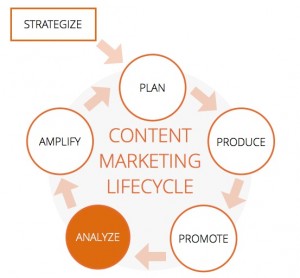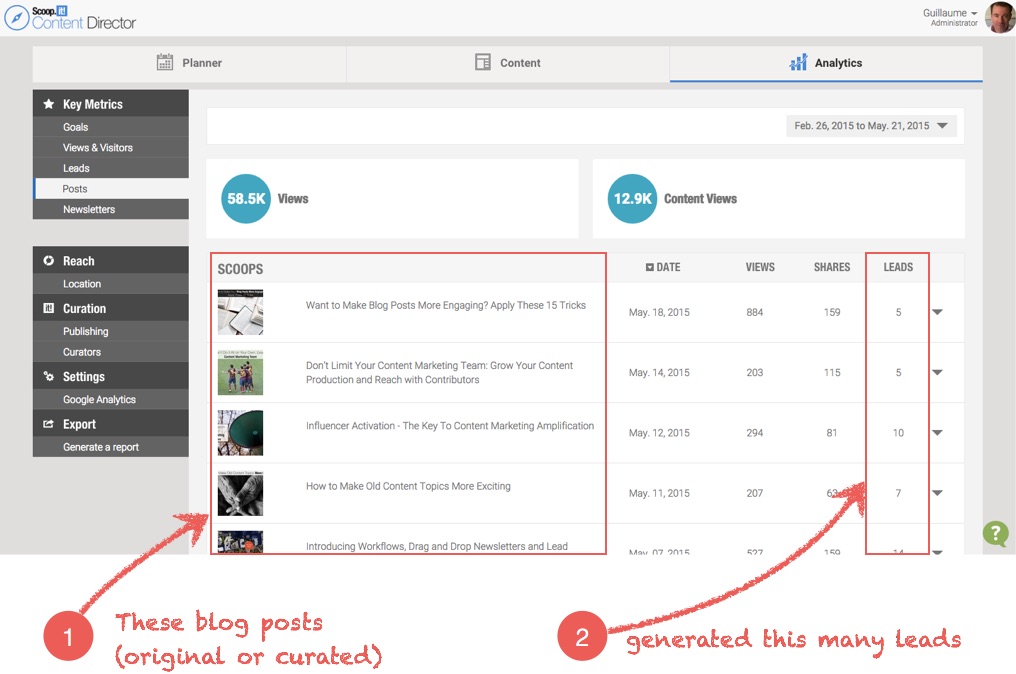
Content marketing is the ultimate way to connect with your audience and build brand awareness. It allows you to tell your own unique story and increase visibility around your product or company. Content marketing is an ongoing cycle whereby success comes from continually optimizing your efforts in every phase of the content marketing lifecycle.
It’s also considerably hard work.
Luckily, there are a lot of great, time-saving tools out there that can maximize your efficiency and dramatically boost the impact of your content marketing efforts.
To recap, here are our last editions of the best tools to use for the first four phases of the content marketing lifecycle:
#1: The best content marketing tools for the strategy phase
#2: The best content marketing tools for the planning phase
#3: The best content marketing tools for the producing phase
#4: The best content marketing tools for the promotion phase
While producing and promoting your content is important, measuring the effectiveness of your efforts is critical if you want to prove and improve ROI. Over 56% of marketers today struggle with how to prove concrete ROI from their content marketing, and admit either failing or lacking clarity entirely on whether they are successful or not.
Analytics tools can help.
To recap, there are 6 phases of the content marketing lifecycle:
Now that you know the most efficient tools for promoting your content, it’s time to learn which tools are best to help you measure and analyze your content.
The best content marketing tools for analyzing your content
You’ve executed your plan and done the best you could. Now it’s time to assess what worked and what didn’t.
To see how people behave on your site:
- Google Analytics: This is one of the tools that separate winners from losers in content marketing. Whether you want to customize reports, measure the impact of social media and mobile on website traffic, measure conversion rates, top pages, or learn where your site traffic is coming from, Analytics has the answer.

To measure your posts’ performance, to figure out when to post and more:
- Scoop.It Content Director: Want to know how well your curated content or your in-house content performed? Scoop.It’s Content Director can show you. There’s a whole section of the software dedicated to statistics and analytics for your account that can generate reports to show you which pieces of content performed best so that you can continually improve.
For keyword ranking, click-through rate, site speed and other website metrics:
- Google Search Console: Google’s Search Console (previously known as Google Webmaster Tools) doesn’t get as much attention as Google Analytics, but it’s a treasure trove of information about how to improve your site. Ignore it at your peril.
To track activity from links offsite:
- Google Analytics Tag Manager: Want to organize your traffic by campaign, even if you’ve got dozens of pieces of content spread all over the web? Tag Manager can do that for you. This is a free tool with amazing features that you should be using. There’s even a tutorial here.

- Bit.ly: This is a great tool for creating trackable links. Bit.ly allows you to track clicks on links that don’t go back to your site. This (free!) tool is mostly known as a link-shortener, but this particular feature is a must-know hack for content marketers. Say, for example you want to publish a Kindle book or an eBook that has a lot of links to resources all over the web. If you use Bit.ly links with tags, you’ll be able to tell which links got clicked the most, and be able to run a report on activity just from your eBook!
Final thoughts
Now you’re back around to strategy. Take everything you’ve learned, scour your research sources, and come up with your next round of amazing content. Every few months to once a year, consider a content audit and use our content marketing analytics framework to understand what actions to take based on your data.
Over to you
What analytics tools are you using to help you figure out what’s working and what isn’t? Feel free to share your best tips and suggestions in the comments below.
Stay tuned for our next (and final!) edition where we’ll go over the best tools to amplify your content in the final phase of the content marketing lifecycle.
Want to create better content in less time? Get more results from your existing content? Find out how artificial intelligence is changing the content marketing game by providing marketers with actionable predictive insights to help them create better content that generates more traffic and leads!
Find out how to use the new Scoop.it Content Director to help you become a smarter marketer!
Image by Jose Manuel Rios Valiente




